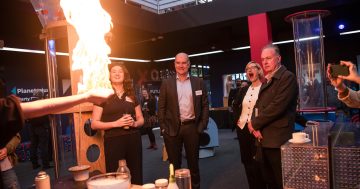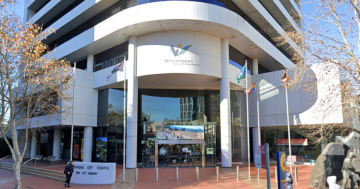
Distinguished Professor Noel Cressie’s research focuses on developing statistical methodologies to address environmental challenges facing our planet. Photo: Studio_OMG.
Where do the growing numbers of carbon dioxide molecules in the atmosphere come from?
It’s a question that should shape the way we tackle climate change, and for University of Wollongong (UOW) Distinguished Professor Noel Cressie, the answer lies not in speculation but in the powerful insights of spatial statistics — a field of science he has spent decades developing.
His groundbreaking research allows scientists to track carbon dioxide molecules in Earth’s atmosphere according to their sources and sinks (or fluxes). It offers policymakers, industries and communities the knowledge they need to take targeted, effective action by enhancing the sinks and mitigating the sources.
This vision — of using mathematics not just to understand the world, but to protect it — has earned Professor Cressie the prestigious 2025 Hannan Medal, awarded by the Australian Academy of Science.
The award is bestowed for outstanding research every two years on a rotating basis across the fields of statistical science, pure mathematics, applied mathematics and computational mathematics.
Cressie’s career has been defined by a blend of mathematical rigour and real-world impact. His pioneering contributions to spatial statistics — the science of understanding patterns and relationships in data rooted in space and geography — have helped in climate science, environmental monitoring and disease mapping.
“It’s a great honour to be given the Hannan Medal. It’s only given once every six years to statisticians, and I think it is recognition that I have a role to play to make this world a better place,” Prof Cressie says.
“I am passionate about our planet. I believe we have a responsibility – personally and collectively – and we are not collectively taking up that responsibility.”
Apart from being a Distinguished Professor of Statistics in UOW’s School of Mathematics and Applied Statistics, Prof Cressie is the Director of the Centre for Environmental Informatics within UOW’s National Institute for Applied Statistics Research Australia.
His expertise in spatial statistics has led to collaborations with researchers worldwide on diverse projects, including Antarctic research as part of Securing Antarctica’s Environmental Future, soil carbon cycling with CSIRO and satellite remote sensing with NASA’s Jet Propulsion Laboratory in Southern California.
He is known for his work using Bayesian statistics – a way of thinking about probability and uncertainty that’s all about updating beliefs as new data come in. This expertise led to membership on a team formed by NASA and the European Space Agency, where he developed a Bayesian design for assessing the biohazard risk of samples to be returned from Mars around 2040.
While Bayesian methods were once scorned by proponents of more mainstream (frequentist) statistical approaches, the explosion in humanity’s ability to collect and analyse data has highlighted their usefulness in complex fields such as spatial statistics, climate modelling and medicine — areas where data are uncertain or incomplete, yet informed decisions are still required.
“My science … is the science of uncertainty or imperfection, and there is a lot of imperfection in the world,” Prof Cressie says. “It is somewhat curious that my concentration is to take the things that are uncertain and try to make sense of them – to turn them into a way of being more certain about the things we do know in science.”
Prof Cressie’s centre at UOW developed a sophisticated statistical framework known as WOMBAT – WOllongong Methodology for Bayesian Assimilation of Trace-gases.
This research is supported by NASA grants to work on its Orbiting Carbon Observatory 2 satellite, which measures and maps carbon dioxide (CO2) fluxes in the atmosphere on a global scale. One outcome has been WOMBAT, which was built to answer that “flux” question: Where do the growing numbers of CO2 molecules in the atmosphere come from?
“In the last 60 years the amount of carbon dioxide has increased about 35 per cent and in my work, I have watched those parts per million measurements trend upwards every year, regardless of COP21 and the Paris Agreement in 2015, COP 22 in 2016, COP 23 in 2017 …” he says.
“Blue-sky, I want to work out more accurately where these carbon dioxide molecules come from. Only then can we truly sound the alarm – for example, that the amount of photosynthesis is falling away, the amount of absorption by the oceans is decreasing, and these trends portend a hotter and more volatile climate.
“Human beings are good at coming up with very creative solutions once we know where the problem is. Already, Australia’s efforts in wind, solar, and electrification are a kind of battle cry – but we’ve reached a stage now where compromises must be made.
“If you measure, monitor and map, then you have a chance to mitigate. We must change our behaviour because we’re heading headlong towards a need for adaptation, rather than mitigation – and that will lead to regions and environments that will no longer be inhabitable.”














